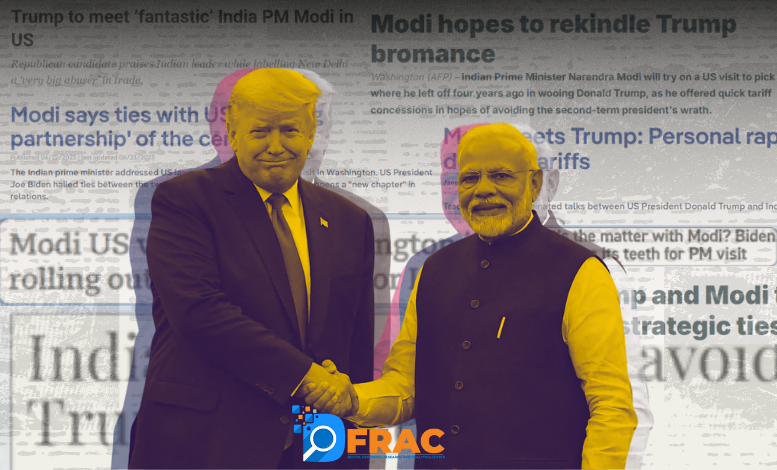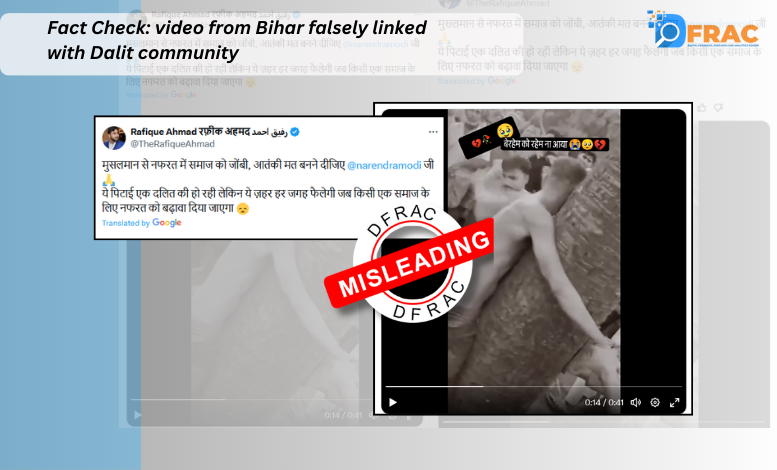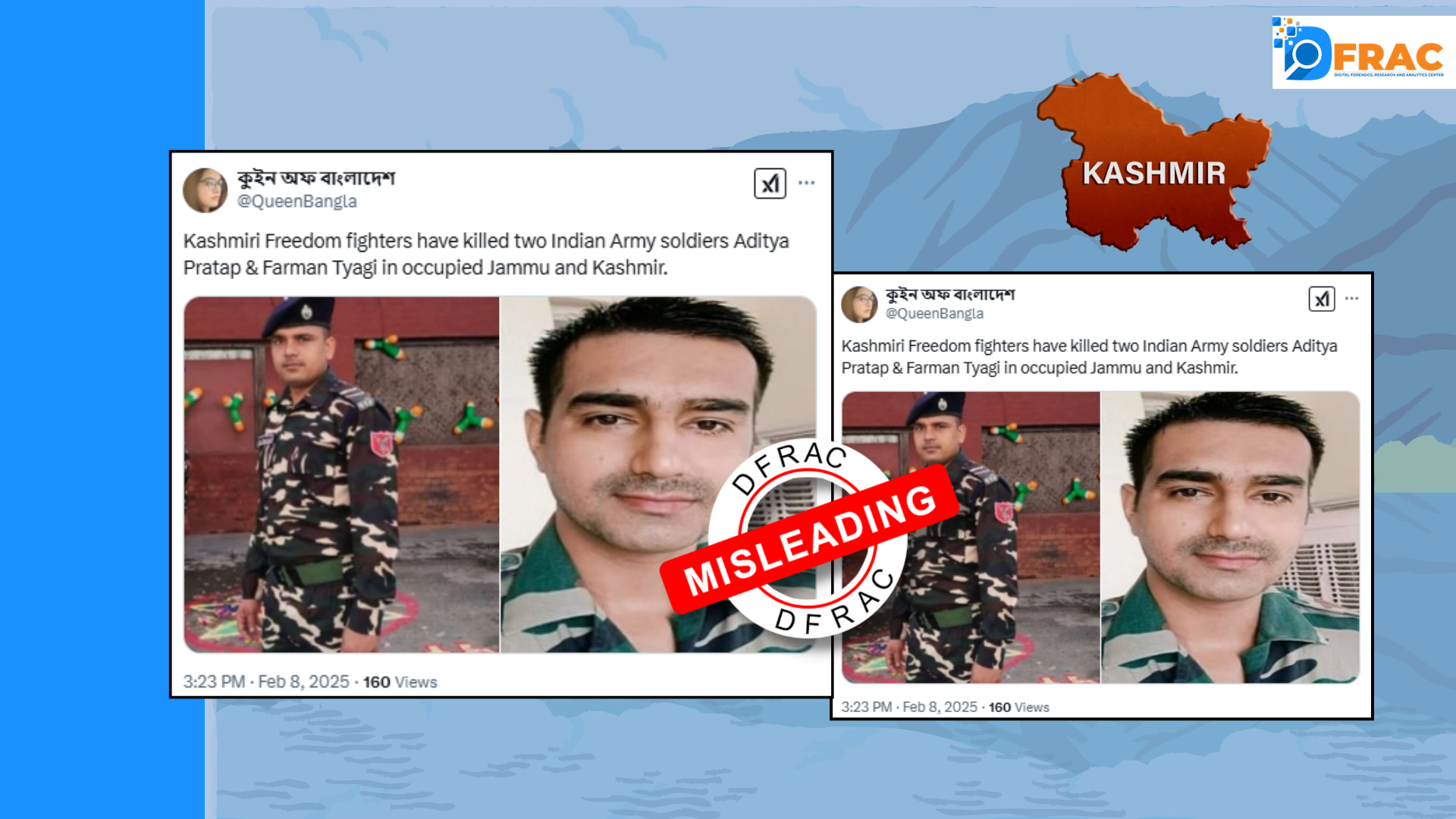Prime Minister Narendra Modi often remains in the headlines of the mainstream media due to his international visits to different nations. These international visits ultimately focus on strengthening diplomatic ties at the global level. They also emphasize trade, defence, and regional cooperation as ways of addressing critical issues globally.
Interestingly, besides Indian media, PM Modi visits have been catapulted to the headlines of the International media. However, in our deliberate investigation, we noted that the style, dialect, and utterance are somewhat different in their published articles, which eventually illustrated their foreign engagements in a skeptical and dubious light.
This exclusive report by DFRAC meticulously evaluates the style, dialect, and utterance exhibited in the published articles of internationally renowned media outlets. Not only this, we also examined the original agenda of these visits.
- Articles with similar headlines
- Timeline Frequency
- Articles’ analysis from the years (2023, 2024, and 2025)
- Sentiment Analysis
- Keywords wordcloud
- Conclusion
Media outlets covered
- Al Jazeera
- The Guardian
- Associated Press
- France 24
- DW
- Arab News
Articles with similar headlines




Timeline Frequency
Articles’ analysis from the years (2023, 2024, and 2025)
Here we have done a brief analysis of articles published by various media outlets in 2025 during PM Modi’s visit to the USA and meeting with US President Donald Trump.
PM Modi’s 2025 visit to the US
Recently, PM Modi visited the USA, where he held high-level bilateral talks with President Donald Trump on a wide range of subjects, including trade and technology, defence and security, energy, and people-to-people ties.
This international visit has grabbed the headlines not only from national media but also from international media.
Investigating this visit, we have analyzed the articles published by international media outlets and found out the peculiarity projected in those articles.
Articles from International media outlets focusing on Tariff aspect in PM Modi visit to the USA (2025)

Style: Analytical
Dialectic: Critical
Utterance: Cautious
Analysis
These articles critique PM Modi cautious and reactive approach to managing US-India relations under President Trump. It suggests Modi is sacrificing long-term strategic interests for short-term diplomatic gains, particularly in the face of potential retaliatory tariffs, deportations, and issues like the trade imbalance and H-1B visas. Modi’s visit to Washington aims to prevent a trade war. These articles portray India as overly reliant on the US and struggling to assert its own position on key matters like tariffs and immigration policies. Modi’s praise for Trump and his acceptance of Indian deportations are framed as signs of India compromising its sovereignty in an effort to maintain a favorable relationship with the US, without achieving substantial progress.
Deportation Issue
Style: Descriptive
Dialectic: Indignant
Utterance: Critical
These articles condemn PM Modi’s approach to handling the deportation of undocumented Indian immigrants by the Trump administration. It underscores PM Modi as overly accommodating to the U.S., prioritizing political favor over national interests and highlighting concerns over India’s passive stance on the mistreatment of its citizens during deportation, questioning Modi’s close relationship with Trump. Critics argue that Modi’s failure to take strong action in securing a dignified return for deported individuals. These pieces imply that Modi’s eagerness to avoid trade conflict and appease the U.S. has led to India sacrificing its citizens’ welfare and undermining its diplomatic integrity.
Defense deal

Style: Informative
Dialectic: Strategic
Utterance: Critical
These articles censure PM Modi’s growing reliance on defense deals with the United States, especially the potential F-35 sale, suggesting it signals a dependency on American military support. Critics argue that this reliance, alongside Modi’s close relationship with President Trump, could escalate tensions with regional powers like China and Russia. Despite the military advancements, one of the articles points out that India remains tied to Russia for arms, questioning Modi’s ability to break free from foreign reliance. The expanding defense collaboration with the U.S. is depicted as a strategic necessity rather than a move toward self-reliance, portraying India’s vulnerability for short-term military goals.
Here we have two articles from another international media outlet focusing on PM Modi’s rapport and visit to the US as a diplomatic balancing act.
Style: Analytical
Dialectic: Critical
Utterance: Negative
The article highlight the complex and contradictory dynamics in the Modi-Trump relationship. It suggests Modi faces challenges balancing India’s priorities with Trump’s America First agenda, particularly on tariffs, trade deficits, and immigration. Modi’s agreement with Trump on deportations risks domestic backlash. While short-term gains may occur, the long-term consequences could undermine Modi’s position and India’s interests.
Style: Analytical
Dialectic: Diplomatic
Utterance: Cautious
The article portrays Modi’s visit to the US as a diplomatic balancing act. It indicates that India’s attempts to address Trump’s concerns, such as tariffs and immigration, while seeking trade and defense gains. However, the focus on compromises, like reducing tariffs and increasing military purchases, suggests that Modi’s visit may involve difficult concessions, potentially weakening India’s autonomy.
France 24
Style: Descriptive
Dialectic: Pragmatic
Utterance: Tenuous
The article hints Modi’s visit comes from diplomacy where India is making significant concessions on trade and immigration to strengthen military and energy ties with the US. The focus on Modi’s alignment with Trump’s nationalistic approach and India’s tariff adjustments suggests that the visit may compromise India’s economic interests.
Articles considering PM Modi’s visit as a transactional engagement

Style: Pragmatic
Dialectic: Transactional
Utterance: Compliant
The articles critically analyze PM Narendra Modi’s visit to the United States, portraying it as a transactional engagement where India makes significant concessions to secure trade and military deals with the US. India’s dependence on the US for defense technology, energy resources, and trade agreements highlights a power imbalance, with India yielding to Trump’s demands. The focus on tariffs, illegal immigration, and defense underscores concerns over India’s lack of a strong, independent strategy in its dealings with the US.
PM Modi’s 2024 visit to US
Prime Minister Narendra Modi visited US in September 2024 where he attended the Quad Leaders’ Summit in Wilmington on September 21, addressed thousands of members of the Indian American community in Long Island on September 22, and spoke at the UN’s Summit of the Future. He also engaged in bilateral discussions with world leaders and held a roundtable with CEOs from leading American tech companies
Al jazeera.
Style: Casual
Dialectic: Critical
Utterance: Dismissive
The article paints India and Modi’s visit in a negative light, emphasizing Trump’s harsh words about India being a “big abuser” in trade, portraying Modi’s interactions as superficial. The tone of Trump’s remarks downplays Modi’s importance, making it seem like India’s relationship with the US is strained and transactional rather than a balanced partnership.
The Guardian
Style: Informative
Dialectic: Tense
Utterance: Cautious
The article casts a negative light on Biden’s remarks, revealing tension in US-China relations and the delicate diplomatic balancing act of the Quad summit. Biden’s comments about China risk undermining the carefully crafted message of unity. PM Modi’s role is projected as supportive but largely secondary, with the Quad’s future uncertain in the face of potential political shifts in the US.
Arab News:
Style: Factual
Dialectic: Strategic
Utterance: Reserved
The article focuses on Modi’s visit to the US, outlining the Quad summit and his meetings. The tone comes from the subtle undercurrent of India’s position in relation to China. There is also a hue of skepticism around the effectiveness of Modi’s engagement with the US, particularly in the context of trade and geopolitical concerns.
Style: Informative
Dialectic: Pragmatic
Utterance: Defensive
The article indicates India’s attempt to position itself as a viable alternative to China, especially in the semiconductor industry. However, the negative undertone reflects skepticism about India’s ability to compete with major suppliers like China and Taiwan. The lack of mention about sensitive issues like Sikh separatist tensions suggests India’s attempt to avoid uncomfortable topics. Additionally, the delay in Modi’s meeting with Trump creates an impression of diplomatic ambiguity.
PM Modi’s 2023 visit to the US (Jun 20, 2023- Jun 25, 2023)
In June 2023, PM Modi visited the USA and Egypt at the invitation of President Joe Biden and First Lady Dr Jill Biden. The PM had productive conversations with President Biden in restricted and delegation-level formats. The leaders highlighted the long-standing friendship and growing cooperation between the two countries, which spans areas like trade and investment, defence and security, energy, climate change, and people-to-people ties.
Both leaders expressed their determination to further deepen the multifaceted Comprehensive Global Strategic Partnership between India and the USA for the benefit of their peoples and the global community. Discussions also covered regional and global issues of mutual interest.
Style: Critical
Dialectic: Confrontational
Utterance: Condemnatory
International media portrays Modi’s yoga event at the UN as an attempt to project an image of global unity and peaceful leadership, while simultaneously highlighting the contradictions within his administration, including religious discrimination and human rights concerns. Critics argue that his domestic policies undermine the inclusivity he promotes abroad, casting doubt on his true commitment to democratic values.
The articles emphasize Modi’s use of yoga as a diplomatic tool. While highlighting his international influence, the narrative points out concerns over his government’s human rights record, including discriminatory policies and violence against minorities. This creates a negative portrayal of Modi, suggesting that his global outreach masks internal challenges to India’s democracy and human rights.
Human rights issue

Meeting with delegates evaluated as India’s covert efforts
Style: Investigative
Dialectic: Defensive
Utterance: Evasive
International media underscores the Indian government’s covert efforts to improve its global image amidst deteriorating democratic norms under PM Modi’s rule. The secret meetings and pushback from officials signal concern over India’s slipping Democracy Index and growing international scrutiny. Modi’s leadership is viewed as undermining democratic values while prioritizing image over substantive reforms.
How PM Modi meets the Press at the White House, as per the international media
Style: Analytical
Dialectic: Critical
Utterance: Cautious
The international media portrays PM Modi as a leader who avoids unscripted moments and public accountability, highlighting his silence on contentious issues, suppression of press freedom, and reluctance to engage with the media. While seeking closer ties with the U.S., Modi’s control over narratives and reluctance to address polarizing issues undermine his democratic image.
Criticism of Light-hearted Humour
Style: Lighthearted
Dialectic: Tolerant
Utterance: Defensive
This article implies that while Modi showcased a lighter side at the White House dinner, his humor couldn’t overshadow concerns regarding his governance, particularly the erosion of democratic freedoms. His charm offensive is seen as an attempt to divert attention from serious issues, including human rights violations and India’s controversial stance on Russia’s war in Ukraine.
Raising doubt on India’s democratic integrity
Style: Neutral
Dialectic: Critical
Utterance: Defensive
This article highlights Modi’s visit as a symbol of strengthened US-India ties, yet it also underscores concerns about India’s human rights record. While Modi deflects questions on discrimination, the article subtly critiques India’s democratic integrity and human rights issues, especially in light of restrictions on free speech and treatment of minorities. It hints at external skepticism regarding India’s internal policies.
Quantitative Analysis of Articles (2023–2025)
An additional cross-comparison of news headlines during PM Modi’s visits (2023–2025) reveals a pattern in the global media narrative, especially in framing Modi’s engagements with US presidents Trump and Biden. This comparative analysis is derived from a computational similarity model, scoring how closely headlines from different outlets mirror each other, both semantically and syntactically.
2025 Headline Similarities
- Tesla hiring post Modi-Musk meet: DW and France 24 headlines reached a 0.98 similarity score, showing tight narrative alignment in tech-diplomacy framing.
- Modi-Trump meet: DW and BBC as well as DW and Associated Press headlines had over 0.88 similarity, indicating synchronized reporting on trade and diplomatic talks.
- Modi’s White House invite: France 24, BBC, and Arab News all aligned (>0.90), focusing on the build-up to the visit and India’s foreign policy expectations.
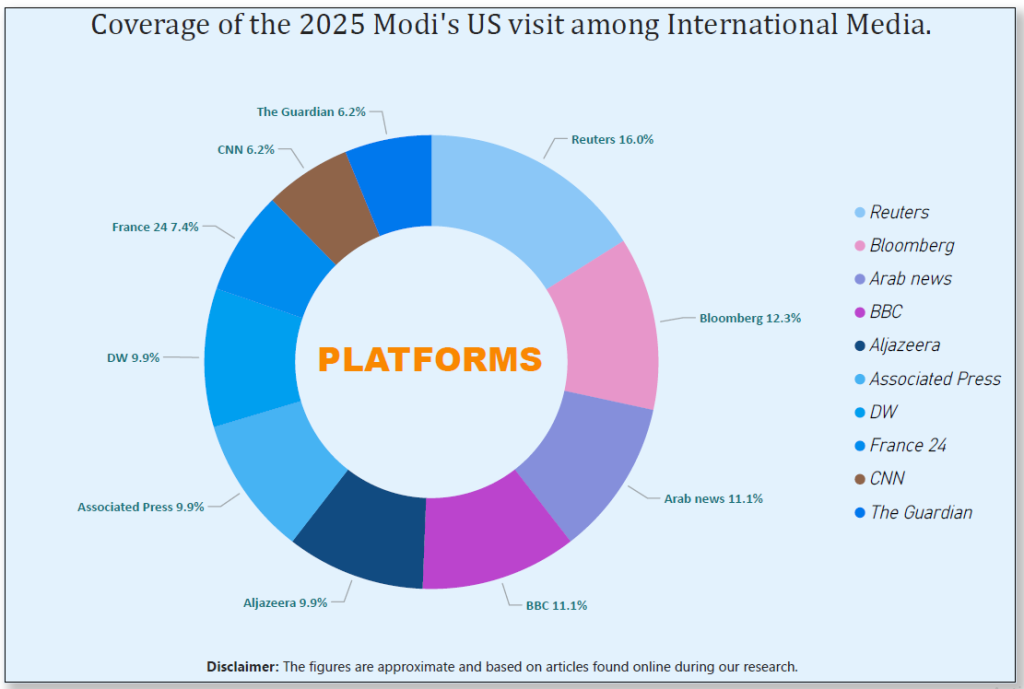
2024 Headline Similarities
- High alignment between Reuters, Bloomberg, AP, and DW, with similarity scores exceeding 0.98, around Modi’s projected visit and Trump’s announcement.
- The linguistic framing portrays Modi’s visit as predictable and rehearsed, often lacking nuance, reinforcing a transactional or repetitive media tone.

2023 Headline Similarities
- Human Rights vs Strategic Ties: A 0.92–0.99 similarity was found in stories covering Modi’s reception in the US with human rights questions. Outlets like Reuters, The Guardian, and Al Jazeera portrayed the diplomacy as ethically complex.
- Defense and Investment: High similarity between reports of India-US cooperation on AI and military tech (e.g., drones), showing Modi’s agenda as geopolitically driven but ethically contested.
- Notably, Modi’s Yoga diplomacy and meetings with Biden had critical resonance in headlines but with a tone of soft power contrast — projecting peace while facing criticism on press and religious freedoms.
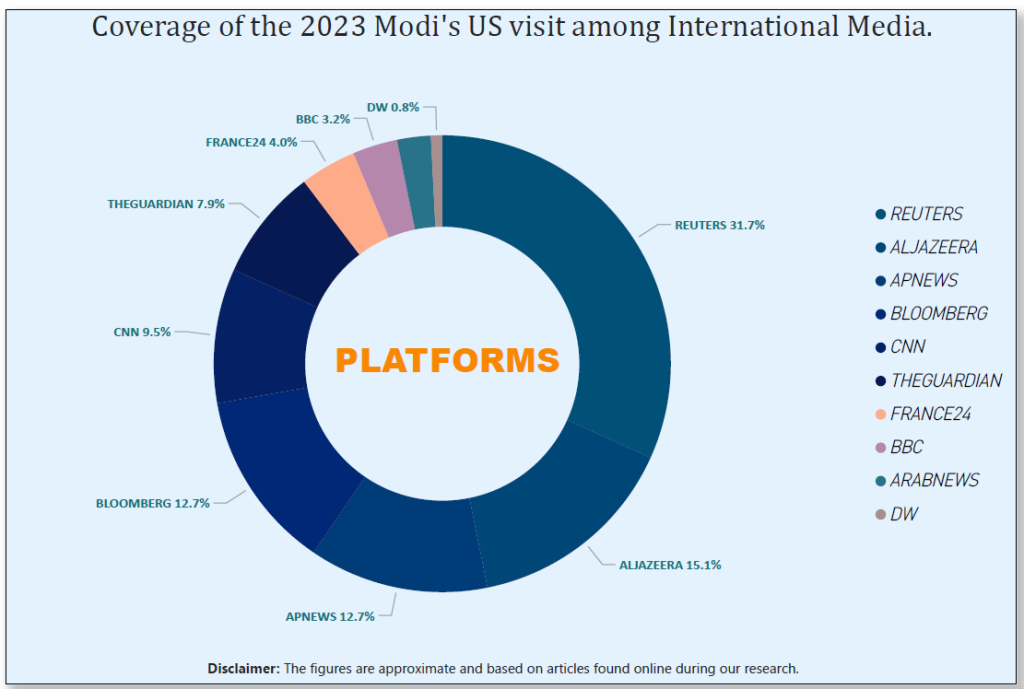
Interpretation & Trends
- Consistency in Themes: Across all three years, similar headlines suggest persistent international skepticism, with variations in tone from strategic neutrality (DW, Arab News) to critical inquiry (Al Jazeera, Guardian).
- Narrative Framing: The tight headline overlap reveals how global narratives around Modi’s visits are not just organic journalistic outcomes but potentially influenced by editorial alignment or syndication.
- Sentiment Drift: As time progresses, articles lean more toward a strategic and transactional tone, with fewer instances of outright positive framing.
The following word cloud illustrates the frequency of key terms appearing in articles from 2023 to 2025, offering insights into the most commonly discussed topics across international media coverage.
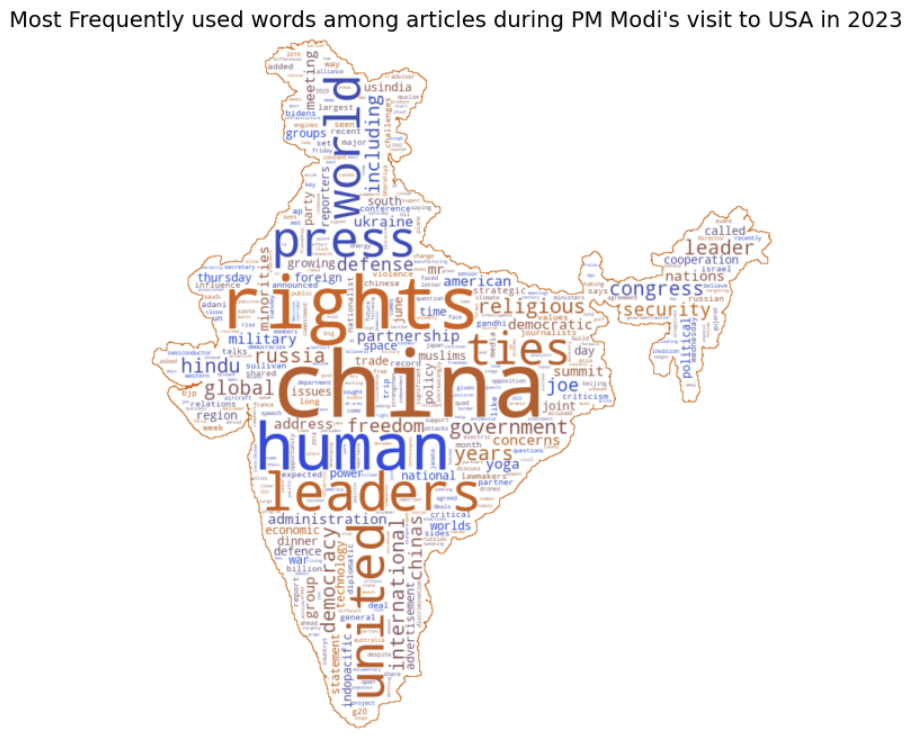
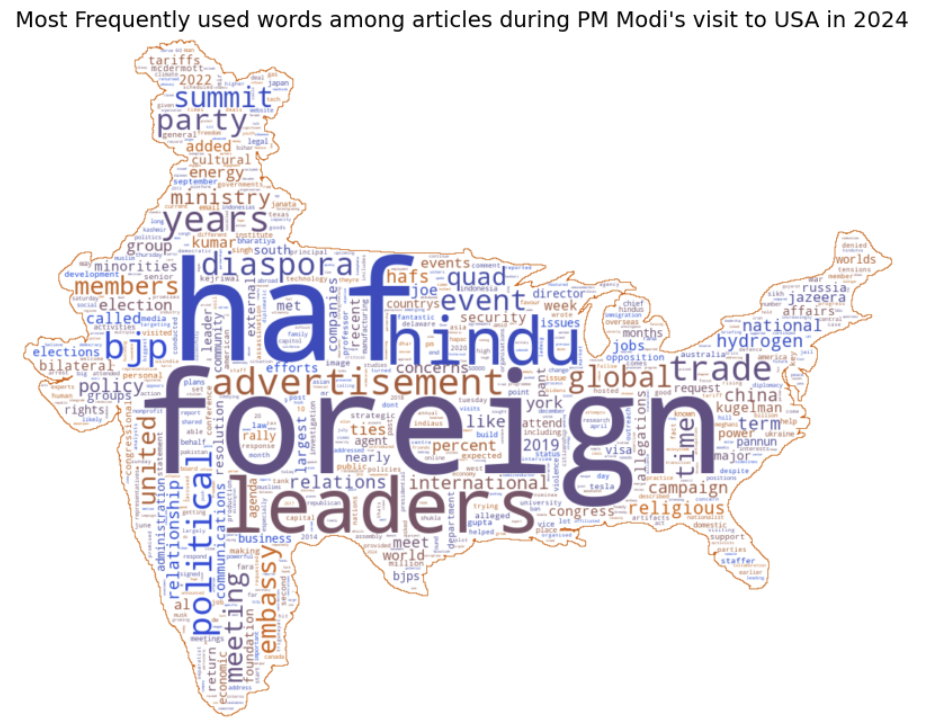
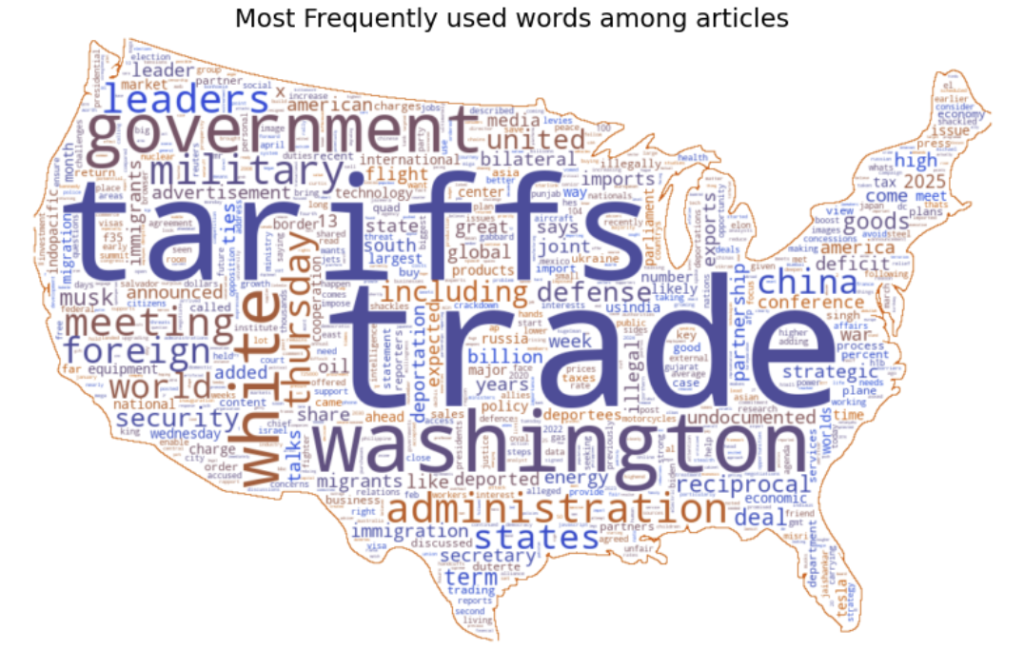
Conclusion
A close examination of these articles reflects the international media’s stance on PM Modi visits to the US in 2023, 2024, and 2025. These visits aimed to strengthen diplomatic ties concerning India’s development and progress. However, a deliberate analysis reveals significant criticism surrounding PM Modi’s visits. It highlights a contrast between prevailing circumstances in India and the agenda of his international visits, often casting a negative light online. This, in turn, demonstrates the internet’s potential to disseminate various narratives and propaganda in the digital landscape.


